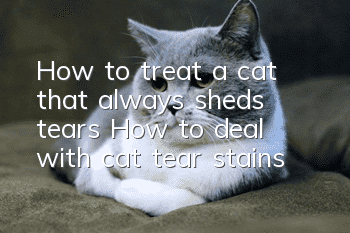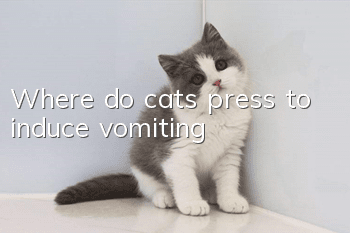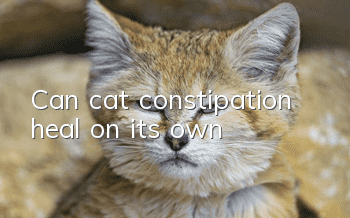How to treat a cat that always sheds tears? How to deal with cat tear stains!

Cats
Cats always appear to be aloof, but one day, they suddenly become "Sister Lin", always shedding tears. Looking at the master, he felt very distressed. Not only is the cat distressed to look at, but it is also a big problem for the cat’s facial beauty. But why does it shed tears? Let’s find the cause first and then prescribe the right remedy.
Common causes of excessive tears in cats are conjunctivitis or obstruction of the nasolacrimal duct. Owners of cats who shed tears must undergo professional examination and treatment to achieve twice the result with half the effort.
1. Cause: The most common cause of cat conjunctivitis is infection with the feline herpes virus. Symptoms: Cat conjunctivitis is usually a latent infection with no clinical symptoms. However, when the cat is under stress or its resistance is reduced, the virus activates and proliferates, causing inflammation and stimulation of the cornea, causing eye pain and discomfort. There will be conjunctival keratitis in the eyes. The owner will find that the cat has more tears, or is accompanied by squinting in the eye for a long time, blepharospasm and entropion, or an increase in brown secretions. Treatment: Owners can give cats daily oral antiviral drugs to inhibit virus activation and proliferation. This drug can also resist stress. It is a safe and useful cat nutritional supplement that can be given for a long time. If secondary bacterial infection and eye discharge occur, broad-spectrum antibiotics and antiviral drugs can be used, and the cat's chance of being stressed should be minimized in daily life.
2. Causes: There are two causes of nasolacrimal duct obstruction, congenital and acquired: Congenital causes: It mostly occurs in purebred cats. The most common cause is the pipe structure of the nasolacrimal duct system. Excessive bending. Acquired causes: Nasolacrimal duct obstruction or stenosis caused by previous eye inflammation, such as conjunctivitis and nasolacrimal duct inflammation, especially in those who have had feline herpes virus. Symptoms: This will cause the cat to have excessive tears that overflow onto the face. Treatment: Cat nasolacrimal duct obstruction can be treated by nasolacrimal duct irrigation under anesthesia. But treatment for congenital problems is often ineffective. For acquired nasolacrimal duct obstruction, doctors can perform dilation of the nasolacrimal duct opening and flush the lumen with anti-inflammatory drugs. Cats with secondary bacterial infections must be treated with antibiotics.
If the cat is crying, the owner must take the cat to the hospital for early treatment as soon as possible, so as not to let the cat become the "Sister Lin" who sheds tears every day.
- Why do cats twitch while sleeping?
- How should kittens be fed? How to feed cats!
- Teach Norwegian forest cats how to shake hands with people and cat training techniques!
- What should I do if my cat bites people and refuses to change?
- What medicine should a Persian cat take if it vomits?
- Misconceptions that often appear in cat training, let’s see how many of them have you caught this time?
- Causes of hairball disease in cats
- How to tell if a cat is in heat?
- Female cat has lumps in her breasts after weaning
- Precautions for breeding Scottish Fold cats, cat owners should read more!



